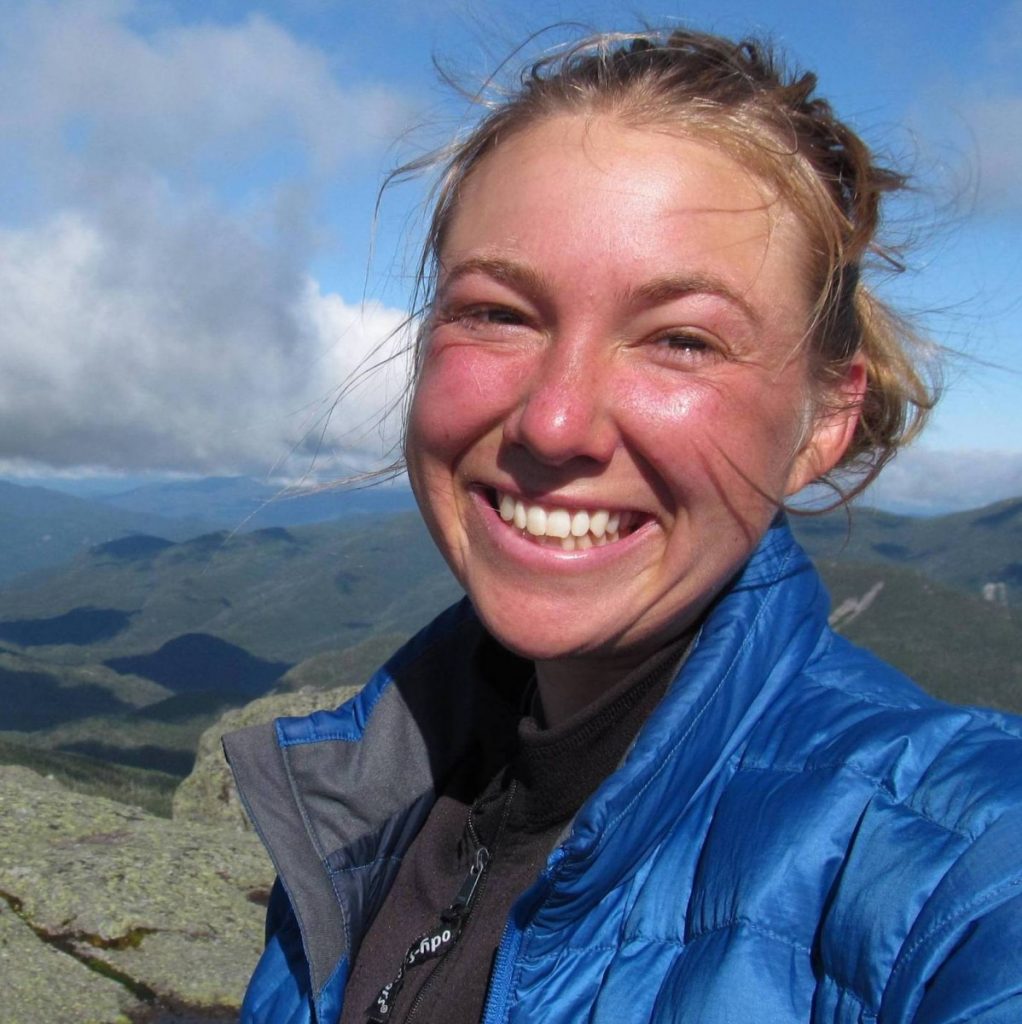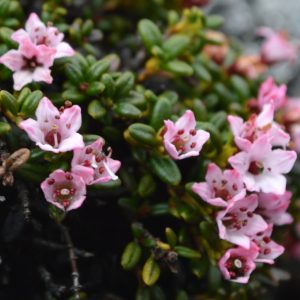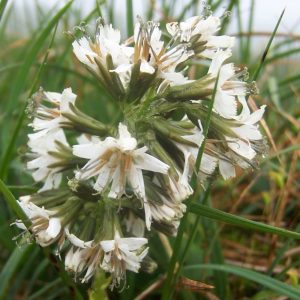- Alpine azalea (Kalmia procumbens). Only population in New York is found on one Adirondack summit. Source: Adirondack Mountain Club.
- Boott’s rattlesnake root (Prenanthes boottii). Only found at 20 sites worldwide. Source: Adirondack Mountain Club.
- Lapland Rosebay (Rhododendron lapponicum). Only populations south of the Arctic tundra are on a few summits including Mt. Marcy. Photo by Brendan Wiltse. Source: Adirondack Mountain Club.
Every summer, a team of enthusiastic educators known as Summit Stewards ascend some of the most popular Adirondack High Peaks to help combat one of the most pressing threats to New York’s rare alpine plant communities: trampling from unaware hikers. New York only has 85 acres of land in the state that contain this unique high-elevation ecosystem, which includes species like Alpine azalea (Kalmia procumbens), Boott’s rattlesnake-root (Prenanthes bootti), and Lapland rosebay (Rhododendron lapponicum) that are usually found much farther north in the Arctic tundra. [ref] State University of New York College of Environmental Science and Forestry, “Adirondack Forest Communities.” [/ref] These communities are remnants of the earliest species to return to the Northeast after the last ice age about 12,000 – 15,000 years ago, when receding glaciers left behind scoured land that could not support the forests that dominate the landscape today. This whole region at that time was dominated by the species of the tundra, and after thousands of years of ecological succession only these pockets on the highest summits still look as they did thousands of years ago. [ref] Klyza and Trombulak, The Story of Vermont. [/ref] However, in the 1970s conservationists began to recognize that plant communities on peaks including Mt. Marcy were being degraded by increasing hiker traffic. Dr. Edwin Ketchledge conducted ecological research in the alpine zone and was able to find methods for stabilizing fragile soils that had been eroding due to the loss of vegetation. By fertilizing and seeding these patches of soil with low-elevation grasses, he was able to encourage native plants to recolonize the summits. [ref] Ketchledge et al., “Rehabilitation of Alpine Vegetation in the Adirondack Mountains of New York State.” [/ref] But remediation was not the only way that the alpine zone could be protected: educational efforts were also critical to prevent further degradation. For the last 27 years, summit stewards have been on the front lines of educating visitors about their impacts on the sensitive alpine environment. [ref] Goren and White, “2016 Mid-Season Summit Steward Report.” [/ref] And with over 400,000 visitor contacts so far, their work has paid off! [ref] Adirondack Mountain Club, “Summit Stewardship Program.” [/ref]
Adirondack ecosystems have faced many other new ecological threats in the last several decades. Acid precipitation is another example of such a threat that conservation efforts were luckily able to largely address. Sulfuric acid and nitric acid in the atmosphere due to pollution cause soils in the Adirondacks to leach aluminum into waterways, which in turn causes them to acidify and leads to fish mortality. [ref] Cronan and Schofield, “Aluminum Leaching Response to Acid Precipitation.” [/ref] Thanks to federal efforts to curb air pollution through the 1963 Clean Air Act, the threat of acid precipitation has been substantially reduced, however the effects of deposition on Adirondack ecosystems are still present. [ref] New York Natural Heritage Program, “Conservation Guide for Alpine Krummholtz.” [/ref] In the coming years, conservation efforts will also have to consider the possibility of shifts in plant communities, especially on the summits, due to climate change. [ref] Ibid. [/ref] In addition, secondary impacts of climate change like pest and pathogen prevalence may create new ecological threats. [ref] Dukes et al., “Responses of Insect Pests, Pathogens, and Invasive Plant Species to Climate Change in the Forests of Northeastern North America.” [/ref] For threatened and endangered alpine species like the Bicknell’s thrush (Catharus bicknelli) and Fernald’s bluegrass (Poa laxa ssp. fernaldiana), climate change will only make them more vulnerable to the difficulties of life in isolated and extreme conditions and conservationists will have to continue to work hard to protect them from human-caused environmental changes. [ref] New York Natural Heritage Program, “Community Guides.” [/ref]
To learn more about the work of the Summit Stewards, listen to Dr. Tyra Olstad—a three-year veteran of the program and a lecturer in geography and environmental studies at the State University of New York at Oneonta—talk about the program and its importance below:

Audio recordings from personal communication, 17 October 2016, Dr. Tyra Olstad. Image used with permission.


